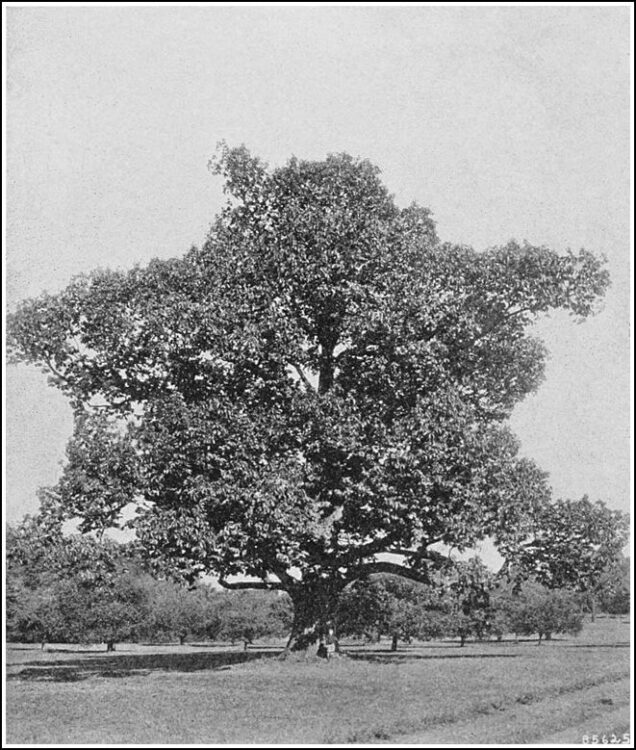From Georgia and Alabama in the South to Michigan and Maine in the North, the American chestnut was once a keystone species of the Eastern Deciduous Forest. In 1904, one out of every four trees east of the Mississippi was an American chestnut. It could reach heights over 100 feet, earning it the nickname “the redwood of the East.” The chestnuts it dropped were a key part of local ecosystems, providing regular food to the forests it so defined. By 1950, the American chestnut was functionally extinct in the wild. Four billion trees vanished in less than 50 years.
“A loss of four billion trees in less than 50 years.”
“This new line was called Darling 58, and thanks to the addition of the oxo gene, it shows chestnut blight resistance comparable to Chinese chestnuts.”
The culprit? Cryphonectria parasitica, otherwise known as chestnut blight. C. parasitica is a fungus native to East Asia, but in the late 1800s, it was accidentally introduced to America through imported chestnut saplings. This disease rapidly spread through the American chestnut population that lacked natural resistance to it, killing 99.9% of American chestnuts.
As soon as it went extinct, forestry professionals and botanists began working to save the American chestnut. They first tried crossbreeding it with Chinese chestnuts and then back with American chestnuts in an effort to transfer the genes that give east Asian chestnut species resistance to the chestnut blight fungus. This showed some promise, but the intrinsic randomness of inheritance and difficulty of predicting if any saplings are blight-tolerant meant that this method has not been successful in restoring American chestnuts to the wild in a meaningful way.
More recently, researchers at The American Chestnut Foundation and SUNY have been using genetic engineering to produce blight-resistant chestnut trees. After observing that C. parasitica kills chestnut trees by producing lethal quantities of oxalic acid, these researchers used Agrobacterium-mediated co-transformation to insert a gene called oxo, which encodes oxalate oxidase, into the genome of a preserved strain of American chestnuts. This new line was called Darling 58, and thanks to the addition of the oxo gene, it shows chestnut blight resistance comparable to Chinese chestnuts. Adding oxo to American chestnuts confers blight resistance because oxalate oxidase breaks down the harmful oxalic acid produced by C. parasitica infection into carbon dioxide and hydrogen peroxide.
Thanks to the incredible success of Darling 58, SUNY Environmental and Forest Biology researchers have begun crossing it with other preserved American chestnut lines, as well as creating two other transgenic blight-resistant chestnut strains to ensure a future resurgent chestnut has enough genetic diversity. They have also applied to the US Forest Service for permission to freely plant these transgenic trees and bring the American chestnut back from the dead.
The move to release these trees into the wild has met some pushback from anti-GMO groups concerned about the unknown effects of releasing any genetically modified organisms into nature. However, the species is minimally altered, only adding in the genes to produce a single enzyme, which is already known to be harmless in the wild — the oxo gene originates from wheat. In January 2023, the Animal and Plant Health Inspection Service, a subset of the department of agriculture, finished an open comment period, soliciting public feedback on potentially giving these transgenic trees unregulated status.
The research into restoring the American chestnut provides some much-needed hope both in restoring this keystone species but also in dealing with invasive species much more broadly. Though it will have to be done with care, the procedure of genetically modifying organisms to confer resistance to invasive species is one with broad applicability. As genetic engineering improves, it will only show more and more promise in helping humanity fix the ecological mess it has created.
Image courtesy of Wikimedia Commons



